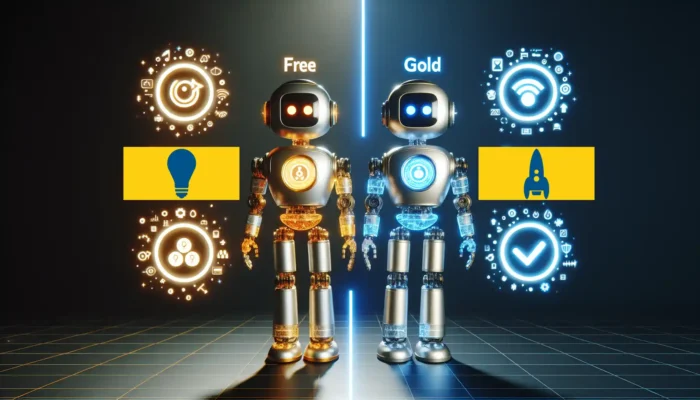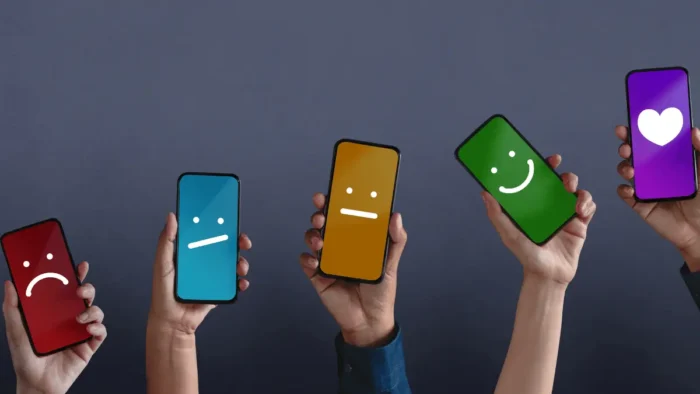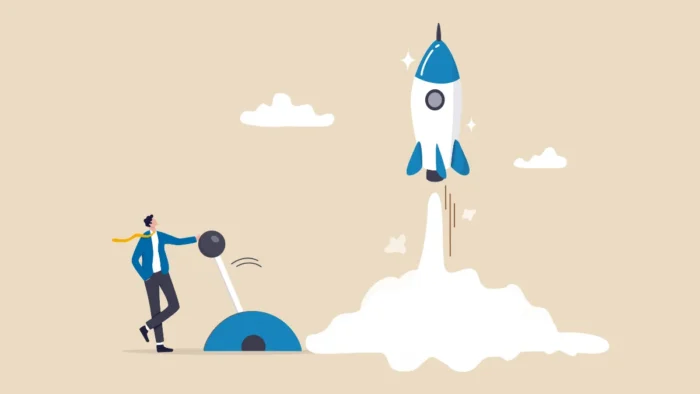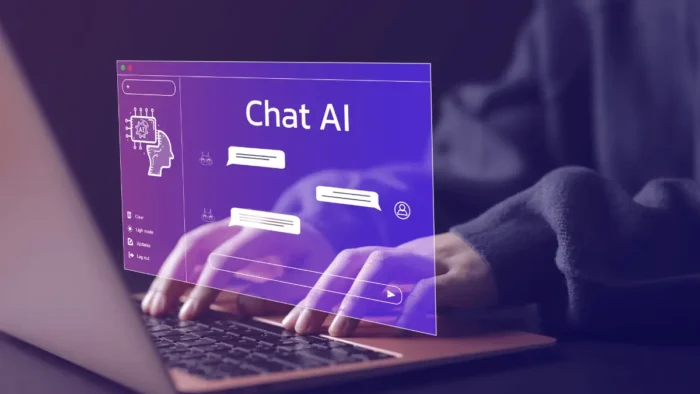Chat GPT, OpenAI’s brainchild, redefines AI-powered conversations, proving invaluable in writing, research, and other applications in our everyday lives. The best part is that Chat GPT understands human language, so it can easily handle complex queries and provide valid responses. This innovative technology can potentially revolutionize various industries, such as healthcare, customer service, finance, and education.
After more than a year of experimenting to find coding solutions, playing with my students with their API, solving complex calculations, and writing and trying recipes (yes, I have asked Chat GPT for a recipe for Monte, and the taste was close to perfect) it was the time to share something here. So, I will try to explore its groundbreaking technology, use cases, and the significant impact it promises across different industries with Chat GPT.
Key Takeaways
- ChatGPT, including its latest iteration, GPT-4, has significantly advanced language understanding and interaction, offering improved accuracy, responsiveness, and search functionalities that powerfully impact user experience across various applications.
- The ChatGPT API has broadened the potential for various applications such as education, creative writing, and task automation, with third-party plugins and integrations further expanding its capability to generate and filter content.
- Ensuring user safety and data privacy is essential in the development and operation of ChatGPT, with measures in place to secure user data, allow for user control over personal information, and prevent misuse of the platform.
Chat GPT: The AI-Powered Language Model

Chat GPT, a generative pre-trained transformer series member, was introduced with GPT-1 in June 2018. The series, developed by OpenAI, rapidly evolved with the launch of GPT-2 in February 2019 and GPT-3 in June 2020. Each new version showcased significant growth in model complexity and text generation capabilities, transforming how AI understood and interacted with human language.
The most recent development in this series, GPT-4, has dramatically changed the game. With its advanced capabilities, GPT-4 aligns better with user intentions, displays increased factual accuracy (even still sometimes you can experience AI hallucinations), and boasts real-time internet search abilities. The result? A large language model that is more responsive, accurate, and dynamic than ever before.
Chat GPT’s impact has been nothing short of profound. Within just five days of its launch, it attracted over one million users, redefining AI’s role in our lives. From helping with creative writing to simplifying our daily tasks, Chat GPT has proven that the future of AI is here.
Generative AI Models
Generative AI models, a unique branch of machine learning, emphasize creating new content. This can include text, images, and even music. These models have deeply influenced various fields, from product design to business process optimization.
The strength of these models is based on their capacity to learn from a massive volume of training data. The complexity of the function they are tasked to learn is directly proportional to the amount of data they need. So, the more complex the function, the more data the model needs for accurate learning.
In essence, generative AI models have been instrumental in revolutionizing the way we generate and consume content. They have opened up new roads for creativity and innovation, making them an integral part of the AI landscape.
Reinforcement Learning and Reward Models
Reinforcement learning is a subset of machine learning that enables an AI agent to make decisions. The agent learns to take actions that maximize a reward in a specific situation, often without a pre-existing dataset of correct answers. This makes reinforcement learning an ideal solution for dynamic environments where outcomes can change or are uncertain.
In reinforcement learning, there are key components like the policy, which maps the agent’s perception of the environment to actions, and the reward function, which assigns numerical scores to environmental states to define goals. These components guide the agent’s actions and help it learn from its environment.
Chat GPT utilizes Reinforcement Learning from Human Feedback (RLHF), incorporating elements of supervised learning, to refine its language model for improved performance. It can provide accurate and relevant responses by learning from its environment and human feedback.
Making the Most of Chat GPT API

Chat GPT API opens the way for unlimited opportunities. It can serve as your creative writing partner and provide you with brainstorming assistance, suggestions, and complete paragraphs to bring your ideas to life. Whether you are writing a novel or drafting a business proposal, Chat GPT API can assist you in making your writing process smoother and more efficient.
Within the educational sector, ChatGPT API serves as a valuable resource. It offers:
- Grammar, punctuation, and stylistic advice
- Help for students and professionals to enhance their writing skills
- More than just an AI assistant, it encourages critical thinking, prompting users to challenge their ideas and refine their arguments.
The applications of Chat GPT API extend beyond education and creative writing. It can quickly produce quality content for diverse applications, from social media posts and blog entries to personalized emails. Developers also use its potential to filter and prioritize web search results, integrating it with live web search to streamline information gathering online.
Improving Daily Life with AI Assistance

AI assistance, including AI systems like ChatGPT, is now a fundamental part of our daily routines, with ChatGPT leading this transformation in the domain of AI chat. As an AI chatbot, ChatGPT can improve the email drafting process by suggesting ways to rephrase sentences and refine the overall structure of the message. You can do the same things with Grammarly. But this improves the quality of your emails and makes the process more efficient.
Related: Chatbox 101: Understanding the Revolutionary Technology Behind the Conversational Revolution
Beyond emails, ChatGPT can automate a range of tasks. Taking out specific context from ongoing email conversations, it can generate appropriate draft responses, which you can personalize before sending. This feature saves time and helps you manage communication effectively.
ChatGPT has several features that facilitate dynamic internet research and answer questions:
- It can prompt you with follow-up questions to delve deeper into a topic.
- It can provide new insights and perspectives on the topics being explored.
- It can summarize current events into briefs when given specific topics, making information consumption quicker.
These features make ChatGPT a valuable tool for staying informed and conducting research.
Additionally, it can simplify browsing the web by offering concise summaries of contents from web pages, helping you quickly understand key information.
Third-Party Plugins and Integrations
The abilities of ChatGPT extend beyond its standalone functionalities. With the help of various plugins and integrations, the full potential of the system can be utilized. Companies like Microsoft and Salesforce have improved their products with ChatGPT integrations for tasks like email generation. For instance, Microsoft’s CoPilot and Salesforce’s EinsteinGPT offer features like automatic email drafting and tone editing.
ChatGPT Plus subscribers can expand the platform’s abilities with plugins, allowing more complex tasks and personalized content generation. Some examples of plugins include:
- Language skills coupled with visual outputs for multimedia content creation
- Advanced data analysis and visualization tools
- Natural language processing for chatbot development
- Speech recognition and synthesis for voice-enabled applications
The possibilities are endless, even when faced with nonsensical answers.
ChatGPT’s API partners with external search APIs to facilitate web browsing functions, even though it doesn’t offer direct internet access. It can perform internet search queries and fetch results from services like Bing. Moreover, in social media contexts, it can be utilized to generate platform-specific content, such as creating catchy TikTok captions to enhance online presence.
Human-AI Collaboration: Training Data and Human Feedback
The improvement of ChatGPT is significantly influenced by human-AI collaboration. Human AI trainers engage in mock conversations with the AI, allowing it to simulate human-like responses. Trainers improve ChatGPT’s understanding of natural language by simulating both sides of an interaction, resulting in more accurate and human-like responses.
The responsible use of ChatGPT involves:
- Being transparent about AI assistance to avoid misleading content
- Implementing user feedback mechanisms to navigate ethical considerations
- Addressing concerns related to email automation, such as spam and phishing risks.
OpenAI employs user data to train and continuously improve ChatGPT’s model and improve the overall user experience with the AI. Through a careful balance of AI capabilities and human input, ChatGPT continues to evolve and improve.
Supervised Learning and Fine-Tuning
The precision and human-like text creation of ChatGPT result from supervised learning and fine-tuning procedures. Supervised learning involves training a model using input-output pairs, where the model learns to predict outputs from new inputs. The AI learns to generate accurate responses to user inputs through this process.
The fine-tuning process involves:
- Human trainers who provide the AI with appropriate responses
- This guides the AI towards generating more accurate and human-like text
- Techniques such as cross-validation and the use of a validation set help in tuning the parameters of a model to reduce false positives and false negatives.
However, the presence of noise in the training data can lead to false positives and false negatives. Thus, data preprocessing and noise reduction techniques are essential in the training process to improve the model’s accuracy. Some techniques that can be used include:
- Removing outliers and irrelevant data points
- Smoothing or filtering the data to reduce noise
- Normalizing or standardizing the data to ensure consistency
- Balancing the training data by oversampling or undersampling
In addition, data augmentation can be used to create an imbalance in the training data towards the type of cases we want to minimize, reducing false negatives.
Addressing False Positives and False Negatives
False positives and false negatives in supervised learning impact the performance of classifications. To challenge incorrect premises, it’s essential to understand that false positives are instances mistakenly identified as part of a positive class. In contrast, false negatives are instances incorrectly labeled as part of a negative class.
Several strategies can be employed to address these issues:
- Modifying the classification threshold can shift the balance of sensitivity and specificity, reducing either false positives or false negatives in model predictions.
- Regularization prevents overfitting noise in the training data.
- Adjusting class weights during model training can prioritize reducing false negatives or positives depending on which outcome is more critical to address.
Comprehensive strategies for mitigating false predictions involve selecting appropriate training data, using specialized models, and retraining the model to correct previous prediction errors. Through these methods, the classification performance of ChatGPT can be significantly improved, ensuring more accurate and reliable responses.
Exploring Free and Paid Versions of ChatGPT

ChatGPT comes in free and paid versions, each presenting a different collection of features and advantages. The free version provides access to the GPT-3.5. In contrast, the paid version, ChatGPT Plus, offers the more advanced GPT-4 with additional features such as multilingual capabilities and processing image data.
ChatGPT Plus subscribers can choose between GPT-3.5 and GPT-4 depending on whether they prioritize speed or advanced capabilities. This version provides faster response times and ensures availability even during peak times, unlike the free version, which may face access limitations.
ChatGPT Plus offers the following benefits:
- General access to ChatGPT, even during peak times
- Faster response times from the model
- Priority access to new features before they are rolled out to free users
The subscription cost for ChatGPT Plus is $20 per month, a worthwhile investment for those requiring more advanced AI capabilities.
Chat History Access and Priority Access
Access to chat history is one of the main benefits of ChatGPT Plus. You can:
- Reference previous conversations to continue interactions seamlessly
- Enhance the user experience
- Have more dynamic and continuous conversations with the AI.
ChatGPT Plus users are often given priority access to new features and capabilities, adding value to the subscription. This means subscribers are the first to experience new enhancements and improvements, providing them an edge over free users.
The range of features and options in ChatGPT Plus can justify the subscription cost, especially for those who need more advanced AI capabilities. For a monthly fee of $20, you can enjoy faster response times, uninterrupted access during peak times, and access to chat history, among other benefits.
Evaluating Costs and Value for Money
The choice to upgrade to ChatGPT Plus should be well-reasoned, reflecting a user’s particular requirements. While ChatGPT Free may suffice for users who only require basic query handling, ChatGPT Plus is more suitable for handling complex queries and data processing tasks.
ChatGPT Plus offers the following benefits:
- More complex information processing
- Use of specific plugins for tasks like summarizing web pages and searching through complex PDFs
- Faster response times
- Uninterrupted access during peak times
If you frequently encounter complex queries that justify the additional expense, upgrading to ChatGPT Plus could be a wise investment.
At a monthly fee of $20, ChatGPT Plus offers enhanced performance, accuracy, and efficiency. While this may seem costly, its benefits, from faster responses to more advanced features, offer significant value for money for those requiring these advanced features.
Ensuring Privacy and Security with ChatGPT
When utilizing AI platforms such as ChatGPT, privacy and security take priority. To protect user data from unauthorized access, ChatGPT servers use encryption both at rest and in transit. Strict access control mechanisms are also implemented to ensure that only authorized personnel can access sensitive user data.
OpenAI guarantees the implementation of stringent security measures. The OpenAI API is annually audited by an external third party to identify and address potential vulnerabilities. They also have a Bug Bounty Program to encourage ethical hackers to report security vulnerabilities. Moreover, OpenAI has established incident response plans to effectively manage and communicate security breaches.
By implementing rigorous security measures and fostering a culture of transparency and accountability, ChatGPT ensures that you can engage with the AI in a safe and secure environment.
Data Collection and User Identity
ChatGPT gathers personal details from user inputs, uploaded files, or feedback. This information may be linked to user identity and reviewed by human AI trainers. You should be aware of this and avoid sharing sensitive information, as all conversations with ChatGPT are logged and can be used as training data.
The conversational data collected by ChatGPT is used to improve its language processing capabilities. This is done while adhering to responsible data practices, which include:
- Sharing data with third parties only with user consent or for legal reasons
- Aligning with regional data protection regulations, such as the GDPR in the EU
- Offering users the right to access, edit, or remove their personal information
OpenAI takes privacy and data protection seriously to ensure user trust and regulation compliance.
To maintain privacy, OpenAI has provided instructions on how users can delete their conversations with Chat GPT and opt out of having their chats saved by default. By giving users control over their data and being transparent about its use, OpenAI ensures that users can trust and feel secure in using Chat GPT.
Protecting Against Illegal Activities and Unsafe Content
Various protection are in place to safeguard against illicit activities and inappropriate content on AI platforms such as ChatGPT, especially when dealing with dangerously strong AI. Major companies, including Walmart, Amazon, J.P. Morgan Chase, and Verizon, have implemented policies or outright bans to prevent their employees from sharing sensitive and proprietary information with AI platforms.
Users have attempted to “jailbreak” ChatGPT using advanced prompt engineering techniques to bypass safety measures. However, OpenAI has continuously improved the ChatGPT platform, with GPT-4 proving to be more resistant to such methods than its predecessors.
OpenAI ensures that user data is stored securely and adheres to strict data retention policies. This means maintaining data only for the necessary amount of time to protect against misuse. By taking such precautions, OpenAI is committed to ensuring that ChatGPT is beneficial but also safe, and secure.
Summary
We’ve embarked on a fascinating journey into the world of Chat GPT, a revolutionary AI-powered language model. From understanding the intricate workings of this AI and exploring its practical applications to discussing the training process and the ethical considerations surrounding its use, we’ve delved deep into the world of ChatGPT.
Whether you’re a free user or a ChatGPT Plus subscriber, it’s clear that this AI language model offers a wealth of capabilities that can greatly enhance your daily life. From creative writing and educational support to content generation and efficient web search, ChatGPT is a powerful tool that redefines human-AI interaction.
In a world where AI is becoming increasingly integral to our daily lives, ChatGPT stands out as a shining example of the potential of AI. As we continue to explore and harness the capabilities of this language model, it’s exciting to imagine the possibilities that lie ahead. So, why not start a conversation with ChatGPT today and experience the power of AI firsthand?
Frequently Asked Questions
ChatGPT uses Reinforcement Learning from Human Feedback (RLHF), incorporating elements of supervised learning to refine its language model for improved performance.
The free version of ChatGPT provides access to the GPT-3.5 model. In contrast, the paid version, ChatGPT Plus, offers the more advanced GPT-4 model with additional features such as multilingual capabilities and processing image data.





